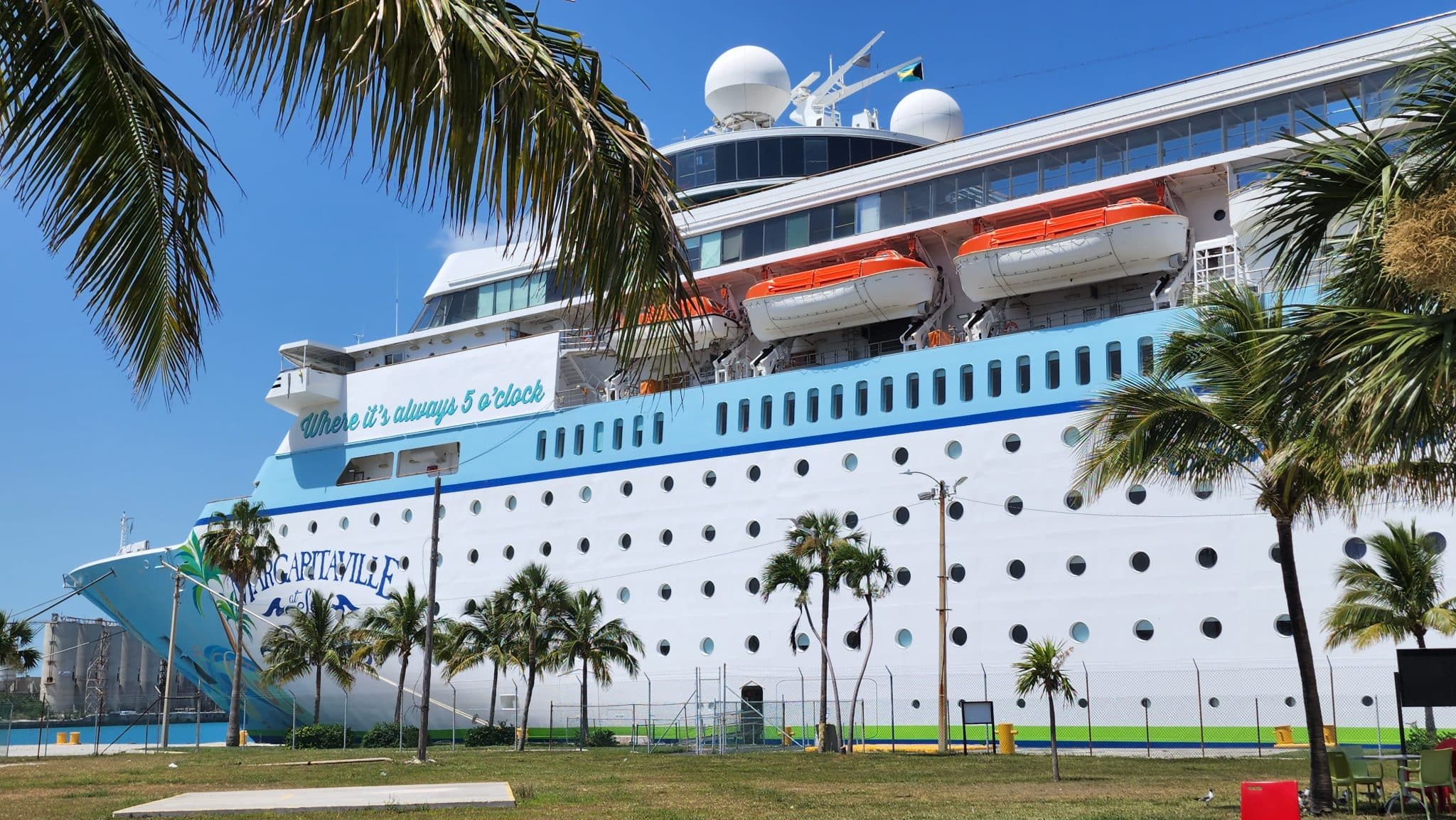Military cruises offer a unique blend of history, adventure, and maritime exploration. This fascinating topic delves into the various facets of these voyages, from active duty deployments and training exercises to historical reenactments and heritage tours. We will explore the diverse experiences available, the logistical complexities involved, and the broader economic and cultural impacts of this specialized form of tourism.
This exploration will encompass the different types of vessels used, the itineraries offered, and the unique activities available on board, comparing and contrasting them with standard cruise experiences. We will also examine the historical significance of military voyages, their portrayal in popular media, and the future potential of this evolving industry. The aim is to provide a comprehensive understanding of military cruises, catering to veterans, active personnel, their families, and enthusiasts alike.
Defining “Military Cruises”
The term “military cruises” encompasses a broad range of maritime activities involving military personnel and assets. It’s not a single, rigidly defined category, but rather an umbrella term covering diverse operations and experiences, all sharing a common element of sea travel with a military connection. Understanding this requires differentiating between various contexts and purposes.
Military cruises serve multifaceted purposes, ranging from essential operational deployments to commemorative voyages. The common thread is the utilization of seafaring vessels for military objectives, whether for active duty, training, or historical commemoration. This broad definition allows for a spectrum of activities, each with unique characteristics and participant profiles.
Types of Military Cruises
Several distinct types of military cruises exist, each serving a different function. These are primarily categorized by their purpose and the individuals involved. Active duty deployments are fundamentally different from training exercises or heritage voyages, both in their objectives and the nature of participation.
Active duty deployments involve the transportation and operation of military personnel and equipment to operational areas. These cruises are integral to projecting power, conducting missions, and maintaining global presence. Examples include aircraft carrier strike groups deploying to volatile regions or amphibious assault ships transporting marines to a conflict zone. These operations are characterized by high operational tempo, strict security protocols, and often involve periods of sustained deployment at sea.
Training exercises, on the other hand, focus on honing the skills and readiness of military personnel and equipment. These cruises may involve simulated combat scenarios, interoperability drills with allied forces, or specialized training for specific units, such as submarine crews conducting underwater navigation exercises or naval aviators performing carrier landings. The emphasis here is on proficiency and preparedness, rather than direct engagement in conflict.
Historical/heritage voyages serve a fundamentally different purpose. These cruises may involve the use of historic naval vessels, or modern ships visiting significant historical sites. These voyages often aim to educate and commemorate past military events, or provide opportunities for veterans and enthusiasts to connect with naval history. An example might be a decommissioned battleship offering tours or a modern warship participating in a commemorative fleet review.
Target Audience for Military Cruises
The target audience for military cruises varies significantly depending on the type of cruise. Active duty deployments, by their nature, target active military personnel and supporting civilian contractors. Training exercises primarily involve personnel from specific military branches or units undergoing specialized training.
However, other types of military cruises have a broader appeal. Historical/heritage voyages often attract veterans, who can reconnect with their service history, and their families. These cruises also appeal to military enthusiasts, history buffs, and the general public interested in naval history and maritime culture. Furthermore, some cruises might specifically target families of active-duty personnel, providing opportunities for recreation and family bonding during periods of deployment or training.
Historical Context and Significance
Military cruises, while a relatively recent phenomenon in their modern, tourism-focused form, are deeply rooted in a long and rich history of naval voyages. Understanding this historical context illuminates the evolution of naval power projection and its subsequent adaptation into a civilian-accessible experience. The development of naval technology, strategic deployments, and even the very concept of maritime dominance have all contributed to the landscape in which modern military cruises operate.
The significance of historical military voyages lies not only in their military achievements but also in their broader impact on global politics, trade, and cultural exchange. These voyages often served as instruments of exploration, colonization, and the establishment of global power structures, leaving indelible marks on the world map and the course of history. The lessons learned from these voyages, both successes and failures, continue to inform modern naval strategies and practices, indirectly influencing the planning and execution of military-themed cruises.
Notable Historical Military Voyages and Their Significance
The voyages of Zheng He in the early 15th century, a massive fleet commissioned by the Ming Dynasty, represent a significant early example of large-scale naval expeditions. These voyages, encompassing extensive exploration and trade across the Indian Ocean, demonstrated the impressive naval capabilities of the Ming Dynasty and contributed significantly to the cultural exchange between East and West. In contrast, the Spanish Armada’s ill-fated attempt to invade England in 1588 stands as a pivotal moment illustrating the limitations of even the most powerful navies when faced with superior strategy and technology. The defeat of the Armada marked a turning point in European naval power, shifting dominance towards England and influencing the course of maritime history for centuries to come. The voyages of Captain James Cook in the 18th century, while largely exploratory, also demonstrated the growing power of the British Royal Navy and its role in charting new territories and establishing British influence across the globe. These expeditions, though undertaken for exploration and scientific purposes, showcased the capabilities of naval vessels for long-range voyages and the potential for projecting power through maritime dominance.
A Timeline of Key Moments in Naval History
The development of naval technology and strategy has directly impacted the feasibility and appeal of modern military cruises. A timeline helps illustrate this evolution:
The following timeline highlights key moments shaping naval history and influencing the current military cruise landscape:
| Date | Event | Significance |
|---|---|---|
| c. 1405-1433 | Zheng He’s voyages | Demonstrated early large-scale naval power and global exploration. |
| 1588 | Defeat of the Spanish Armada | Shifted European naval dominance and influenced naval strategy. |
| 1768-1779 | Captain Cook’s voyages | Showcased long-range naval capabilities and the potential for global influence. |
| 19th-20th Centuries | Development of steam power, ironclad warships, and aircraft carriers | Revolutionized naval warfare and global power projection. |
| Post-World War II | Decommissioning of warships and rise of naval tourism | Led to the availability of ships for conversion into cruise ships. |
Impact of Historical Events on the Development of Military Cruises
The decommissioning of numerous warships following World War II created a surplus of vessels, many of which were subsequently repurposed for civilian use, including cruise ships. This readily available supply of robust, seaworthy vessels played a crucial role in the development of the cruise industry, indirectly contributing to the emergence of military-themed cruises. The fascination with naval history and the romanticized image of naval life, fueled in part by historical accounts and popular culture, also created a market for experiences that tap into this interest. Modern military cruises therefore capitalize on this legacy, offering passengers a taste of naval life while also showcasing the historical significance of these vessels and the naval traditions they represent. The development of naval tourism, in essence, represents a fascinating transformation of military assets into civilian attractions, reflecting both the changing geopolitical landscape and the public’s enduring interest in naval history.
The Economic Impact of Military Cruises
Military cruises, while often focused on commemorating historical events or providing unique travel experiences for personnel and their families, generate significant economic benefits for the ports and regions they visit. These benefits extend beyond immediate spending by cruise passengers and crew, impacting various sectors and stimulating long-term growth.
The economic contributions of military cruises are multifaceted, encompassing direct spending on goods and services, the creation of jobs, and the stimulation of related industries such as tourism and hospitality. The scale of this impact varies depending on the size and frequency of the cruises, the length of their stays, and the spending habits of the passengers.
Direct Economic Contributions
Military cruises inject substantial capital directly into local economies. Passengers spend money on shore excursions, dining, shopping, and entertainment. Crew members also contribute through their purchases and spending during port calls. For example, a large naval vessel’s visit to a smaller port might mean hundreds of sailors spending their downtime in local establishments, significantly boosting revenue for restaurants, bars, and souvenir shops. This direct spending creates a tangible and immediate economic boost. Furthermore, the cruise lines themselves contribute through port fees, fuel purchases, and contracting local services for maintenance and provisioning. The cumulative effect of these various forms of direct spending can be considerable, particularly for smaller coastal communities that rely heavily on tourism.
Job Creation and Related Industries
The influx of military cruise passengers and crew generates a demand for additional labor in various sectors. Ports often require additional staff to handle the increased logistics associated with larger vessels. Local businesses, from transportation services to restaurants, hire extra staff to meet the surge in demand during cruise visits. The positive economic ripple effect extends to related industries such as hospitality, transportation, and retail, creating a multiplier effect on employment opportunities. For instance, a significant increase in tourism due to regular military cruises might lead to the creation of new hotels, restaurants, and tour operator businesses, thereby creating long-term employment opportunities.
Stimulation of Tourism and Infrastructure Development
Military-themed tourism, while still a niche market, holds significant potential for growth and development. The unique nature of these cruises, focusing on naval history or military heritage, attracts a specialized audience interested in exploring specific historical sites or experiencing unique onboard activities. This can lead to investment in infrastructure development to cater to the specific needs of this market. For example, a region known for its naval history might invest in developing historical museums, restoring historical sites, and creating themed attractions to capitalize on the increased interest generated by military cruises. This targeted investment in tourism infrastructure not only caters to military cruise passengers but also attracts other tourists interested in the region’s history and heritage, further stimulating economic growth.
Future Trends and Potential
The military cruise industry, while still nascent, holds significant potential for growth and diversification. Technological advancements and shifting geopolitical landscapes will likely shape its future trajectory, creating opportunities for innovative services and expanded target markets. Understanding these trends is crucial for stakeholders to capitalize on emerging possibilities.
Technological advancements will undoubtedly play a pivotal role in shaping the future of military cruises. Enhanced cybersecurity measures, improved navigational systems, and the integration of advanced communication technologies will be essential for ensuring the safety and operational efficiency of these voyages. Furthermore, the incorporation of virtual and augmented reality technologies could revolutionize training exercises conducted during cruises, offering more immersive and realistic simulations.
Technological Integration and Enhanced Security
The integration of advanced technologies will be a defining factor in the future of military cruises. This includes the implementation of sophisticated cybersecurity protocols to protect sensitive data and systems from potential threats. Improved navigation systems, incorporating AI-powered route optimization and collision avoidance features, will enhance safety and efficiency. Real-time communication networks will allow for seamless coordination between the cruise vessel and other military assets. For example, the use of satellite communication systems will ensure reliable connectivity even in remote areas, enabling efficient command and control operations. The incorporation of biometric security measures, such as facial recognition and fingerprint scanning, will enhance passenger and crew safety.
Future Scenarios for Military Cruises
A futuristic military cruise ship, sleek and technologically advanced, sails across the ocean. Onboard, sailors utilize holographic training simulations, engaging in realistic combat scenarios without the risk of physical harm. Autonomous drones monitor the ship’s perimeter, enhancing security. Advanced communication systems maintain constant contact with land-based command centers, ensuring smooth coordination. The ship itself is powered by a hybrid system combining traditional fuel sources with renewable energy technologies, reflecting a commitment to environmental sustainability.
In another scenario, a smaller, more agile military cruise vessel operates closer to shore, providing support for coastal defense operations. This vessel incorporates stealth technology, making it difficult to detect by enemy forces. It is equipped with advanced sensor systems capable of detecting and tracking potential threats. The crew is highly trained in special operations, utilizing the cruise as a platform for conducting rapid deployment and response missions. This vessel’s design reflects a shift towards smaller, more versatile military platforms capable of operating in diverse environments.
Diversification and Market Expansion
The military cruise market possesses considerable potential for diversification and expansion. Beyond traditional training exercises, these cruises could incorporate joint operations with allied forces, fostering stronger international partnerships. The development of specialized cruise itineraries focused on specific military skills, such as cyber warfare or underwater demolition, could attract a wider range of participants. Furthermore, incorporating elements of tourism and cultural exchange into military cruises could generate additional revenue streams and enhance public perception of military activities. For example, a cruise could include port calls in culturally significant locations, offering opportunities for crew members to engage with local communities. This would foster positive international relations and provide valuable cultural experiences for personnel.
Last Recap
In conclusion, military cruises represent a compelling niche within the tourism sector, offering a blend of historical reflection, experiential learning, and unique maritime adventures. Understanding the logistical intricacies, economic impacts, and public perception of these voyages is crucial for their continued development and success. From the historical context of naval warfare to the modern-day operations and environmental considerations, the narrative surrounding military cruises offers a rich tapestry of compelling stories and significant implications. As technology advances and interest evolves, the future of military cruises promises diverse and exciting possibilities for both participants and the wider community.




